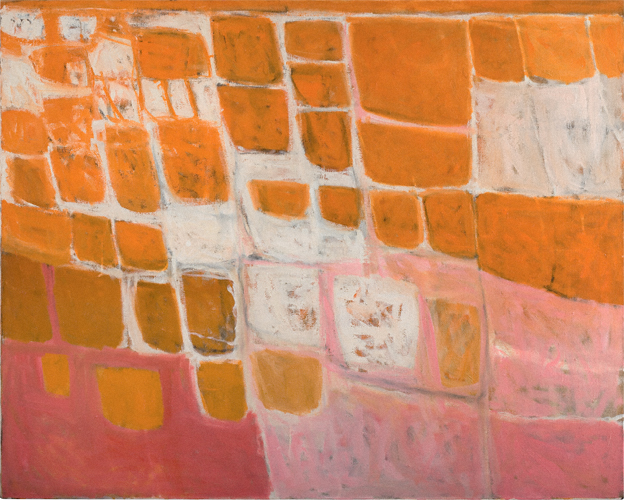The Altnagelvin mural was a commission that occupied Scott between September 1958 and September 1961. Murals were the one subject that Scott and Rothko are known to have discussed during the short time they spent together in August 1959. By that stage Scott had only just started work on an ambitious mural commissioned by the architectural firm Yorke Rosenberg and Mardall for the entrance hall of Altnagelvin Hospital in Londonderry, Northern Ireland. The scale of the commission was something entirely new for Scott, and it is hardly surprising that it took him nearly a year even to figure out how to start. Eugene Rosenberg, the senior partner in the firm, turned out to be the best possible ally when it came to dealing with the more conservative elements in the hospital administration. Scott let it be known that he wanted to do a mural that was in keeping with Ireland, even with the Londonderry site itself, and he sought the help of Eric Jones, the secretary of the hospital. He must have been startled at what the hospital official came up with. Under the heading ‘Let There Be Light’, Jones had taken as his theme ‘man’s journey to enlightenment, law, order, justice and mercy’, a journey he interpreted as an epic history of Londonderry told through a cast of saints and soldiers, colonels and bishops, farmers and tradesmen, all to be pictured against a landscape of fields, farms, factories and churches. How Scott handled this daunting suggestion is not known, but Jones’s scenario, however comically overblown it may seem now, gives a sobering idea of local expectations. As it happened, Scott stayed with the idea of Irish history, but approached it through his research into ancient Celtic art rather than through Jones’s pictorial history books. The dozens of notes and sketches he made for the mural show his ideas progressing from the imagery of ancient Ireland, such as crosses, rounded towers and intricate symbolic patterns, to the elemental forces of earth, air, water and fire. Right from the beginning, he and Rosenberg had agreed that the mural should be abstract, but Scott wanted the abstract to be informed not by any literal meaning, but by suggestion, by the sort of mysterious meanings that lie buried for centuries in ancient signs and pictographs.
Scott worked on the mural in his studio in Hallatrow, where, for lack of space, he had to spread the panels over three walls of one room and two walls in an adjoining room (which Mary Scott had used as her sculpture studio). Shuttling between the two spaces, he would carry cut-out pieces of paper and pin them to the plywood panels to try out what he called ‘my shapes’. Little is known about the progress of the mural, but it evidently went through several stages, beginning with Scott working on each of the fifteen panels separately before deciding to divide them into pairs, leaving one to stand alone. At one stage, he was working with a range of bright oranges, salmon pinks, light yellows and blues (colours that were found underneath when the mural was restored in 2010). The darker, more austere colours of the final version, dark blues deepened in places by black, ochres, light cerulean blue and blue-whites, are colours that suggest the raw elements of an island landscape; earth, air and water. Recent American painting may have given Scott the confidence to take on the scale of these panels, but it was the ancient art of Ireland that helped him find the visual language. The shell-like motif in the centre of the mural is closely related to the prehistoric carvings in the passage graves and stone circles found all over Northern Ireland, while the heavy texturing of the paint in the other panels recall the ancient weathering of prehistoric monoliths. Even so, the grand gestural forms that fill these panels owed more to American painting than any other painting being produced in this country. Scott had been ‘overwhelmed’, as he put it by the scale and the directness of the work he had seen in 1953 when he visited New York. In February 1959, when he had barely started work on the panels, he had a fresh encounter with the Abstract Expressionists when the exhibition The New American Painting, organised by Alfred Barr, opened at the Tate Gallery. The grand sweep of the black-and-white paintings of Franz Kline and Robert Motherwell must have inspired Scott with their astonishing monumentality. Their works, as Barr had observed at the time, were ‘as big as mural paintings’.
In November 1961, Scott’s mural was shown at the Tate Gallery before being installed at Altnagelvin. When it was unveiled at the hospital a few months later, before a large invited audience, the response was one of horrified silence. According to Mary Scott, who had been asked to pull the cord at the opening ceremony, ‘People stared, stunned and silent. There was no sound at all. Within less than twenty minutes the room was empty.’


